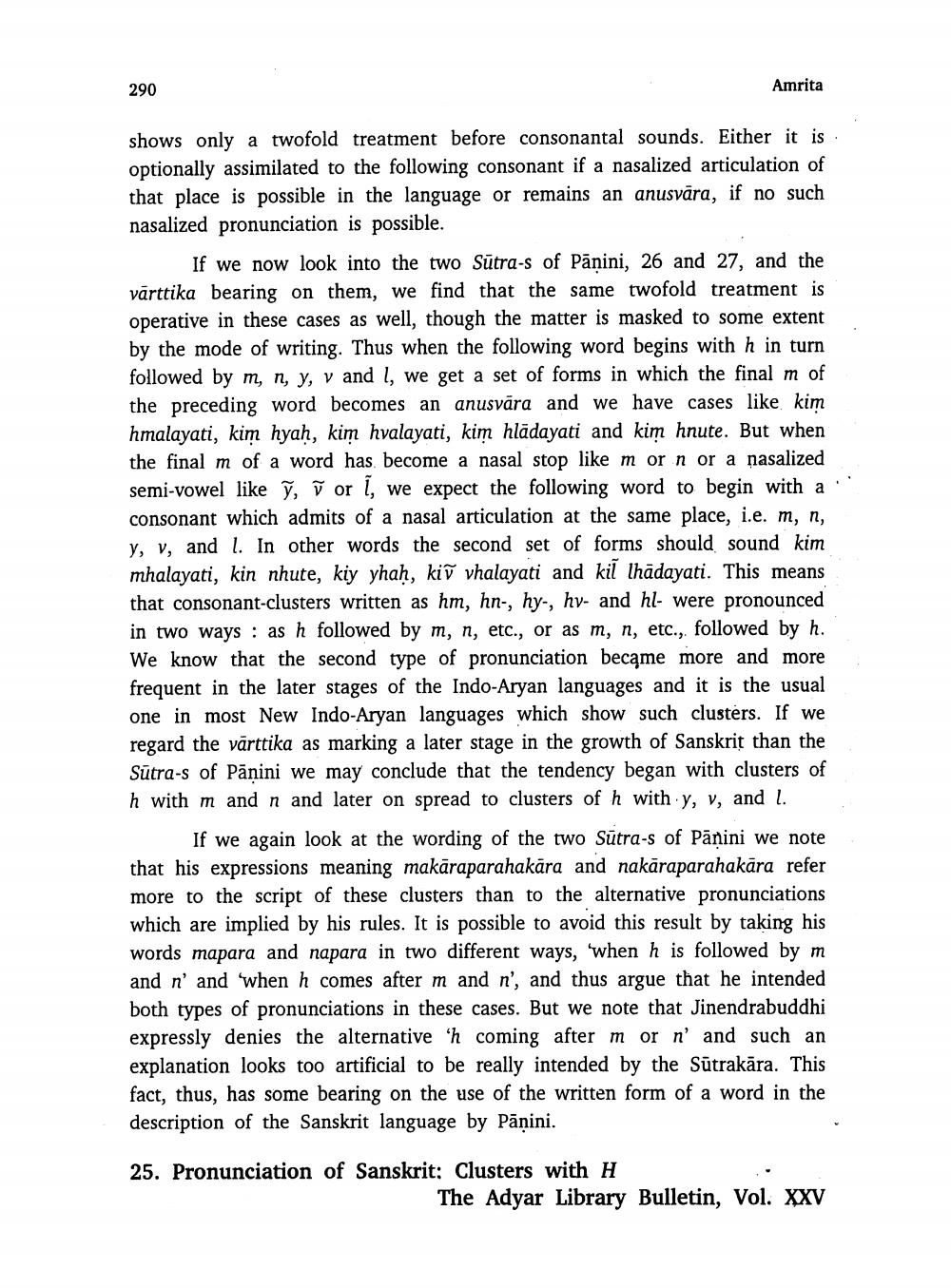________________
290
Amrita
shows only a twofold treatment before consonantal sounds. Either it is optionally assimilated to the following consonant if a nasalized articulation of that place is possible in the language or remains an anusvāra, if no such nasalized pronunciation is possible.
If we now look into the two Sūtra-s of Pāṇini, 26 and 27, and the vārttika bearing on them, we find that the same twofold treatment is operative in these cases as well, though the matter is masked to some extent by the mode of writing. Thus when the following word begins with h in turn followed by m, n, y, v and I, we get a set of forms in which the final m of the preceding word becomes an anusvāra and we have cases like kim hmalayati, kim hyah, kim hvalayati, kim hladayati and kim hnute. But when the final m of a word has become a nasal stop like mor n or a nasalized semi-vowel like ĝ, or 1, we expect the following word to begin with a '' consonant which admits of a nasal articulation at the same place, i.e. m, n, y, v, and l. In other words the second set of forms should sound kim mhalayati, kin nhute, kiy yhah, ki v vhalayati and kil thadayati. This means that consonant-clusters written as hm, hn-, hy, hv- and hl- were pronounced in two ways : as h followed by m, n, etc., or as m, n, etc.,, followed by h. We know that the second type of pronunciation became more and more frequent in the later stages of the Indo-Aryan languages and it is the usual one in most New Indo-Aryan languages which show such clusters. If we regard the vārttika as marking a later stage in the growth of Sanskrit than the Sūtra-s of Pāṇini we may conclude that the tendency began with clusters of h with m and n and later on spread to clusters of h with y, v, and l.
If we again look at the wording of the two Sūtra-s of Pānini we note that his expressions meaning makāraparahakāra and nakāraparahakāra refer more to the script of these clusters than to the alternative pronunciations which are implied by his rules. It is possible to avoid this result by taking his words mapara and napara in two different ways, when his followed by m and n' and 'when h comes after m and n', and thus argue that he intended both types of pronunciations in these cases. But we note that Jinendrabuddhi expressly denies the alternative 'h coming after m or n' and such an explanation looks too artificial to be really intended by the Sūtrakāra. This fact, thus, has some bearing on the use of the written form of a word in the description of the Sanskrit language by Pāṇini.
25. Pronunciation of Sanskrit: Clusters with H
The Adyar Library Bulletin, Vol. XXV




